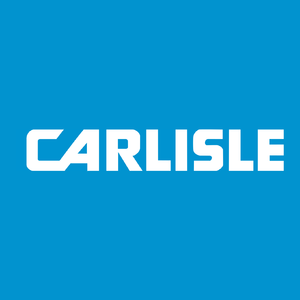
Valmont (VMI)
We aren’t fans of Valmont. Its sales have recently plummeted and its meager cash generation gives it few resources to turn the ship around.― StockStory Analyst Team
1. News
2. Summary
Why Valmont Is Not Exciting
Credited with an invention in the 1950s that improved crop yields, Valmont (NYSE:VMI) provides engineered products and infrastructure services for the agricultural industry.
- Absence of organic revenue growth over the past two years suggests it may have to lean into acquisitions to drive its expansion
- Projected sales growth of 2.7% for the next 12 months suggests sluggish demand
- A silver lining is that its performance over the past five years shows its incremental sales were extremely profitable, as its annual earnings per share growth of 18.7% outpaced its revenue gains


Valmont falls short of our quality standards. We’re looking for better stocks elsewhere.
Why There Are Better Opportunities Than Valmont
High Quality
Investable
Underperform
Why There Are Better Opportunities Than Valmont
Valmont is trading at $414.90 per share, or 20x forward P/E. This multiple is cheaper than most industrials peers, but we think this is justified.
Cheap stocks can look like a great deal at first glance, but they can be value traps. They often have less earnings power, meaning there is more reliance on a re-rating to generate good returns - an unlikely scenario for low-quality companies.
3. Valmont (VMI) Research Report: Q3 CY2025 Update
Infrastructure and agriculture equipment manufacturer Valmont Industries (NYSE:VMI) announced better-than-expected revenue in Q3 CY2025, with sales up 2.5% year on year to $1.05 billion. The company expects the full year’s revenue to be around $4.1 billion, close to analysts’ estimates. Its non-GAAP profit of $4.98 per share was 7.8% above analysts’ consensus estimates.
Valmont (VMI) Q3 CY2025 Highlights:
- Revenue: $1.05 billion vs analyst estimates of $1.03 billion (2.5% year-on-year growth, 1.5% beat)
- Adjusted EPS: $4.98 vs analyst estimates of $4.62 (7.8% beat)
- Adjusted EBITDA: $163.1 million vs analyst estimates of $161.2 million (15.6% margin, 1.2% beat)
- The company reconfirmed its revenue guidance for the full year of $4.1 billion at the midpoint
- Management raised its full-year Adjusted EPS guidance to $19.10 at the midpoint, a 6.1% increase
- Operating Margin: 13.5%, up from 12.3% in the same quarter last year
- Free Cash Flow Margin: 6.7%, down from 20.1% in the same quarter last year
- Backlog: $1.73 billion at quarter end
- Market Capitalization: $8.07 billion
Company Overview
Credited with an invention in the 1950s that improved crop yields, Valmont (NYSE:VMI) provides engineered products and infrastructure services for the agricultural industry.
Founded in 1946 and headquartered in Omaha, Nebraska, Valmont has established itself as a leader in its field, with operations spanning North America, Europe, Asia, and Australia. Valmont operates through two main reportable segments: Infrastructure and Agriculture. The Infrastructure segment is responsible for the manufacture and distribution of products and solutions serving utility, solar, lighting, transportation, and telecommunications markets, as well as providing coatings services to protect metal products. The Agriculture segment focuses on the manufacture of center pivot components and linear irrigation equipment for agricultural markets, including parts, tubular products, and advanced technology solutions for precision agriculture.
The Infrastructure segment offers a wide range of products, including steel, pre-stressed concrete, and composite structures for electrical transmission, substation, and distribution applications. It also provides steel, aluminum, wood, and composite poles and structures for lighting and transportation applications, as well as coatings services to inhibit corrosion and extend the service life of various materials. Additionally, this segment manufactures and distributes products for the wireless communication market and solar single-axis trackers for the renewable energy sector.
The Agriculture segment is known for its Valley® brand of mechanical irrigation equipment and related service parts. These irrigation machines are designed to efficiently apply water and chemicals to crops, with options ranging from standard center pivots to corner machines and linear systems. The segment has also expanded into technology products and services, offering advanced solutions for crop monitoring and management through artificial intelligence and machine learning.
4. Building Materials
Traditionally, building materials companies have built competitive advantages with economies of scale, brand recognition, and strong relationships with builders and contractors. More recently, advances to address labor availability and job site productivity have spurred innovation. Additionally, companies in the space that can produce more energy-efficient materials have opportunities to take share. However, these companies are at the whim of construction volumes, which tend to be cyclical and can be impacted heavily by economic factors such as interest rates. Additionally, the costs of raw materials can be driven by a myriad of worldwide factors and greatly influence the profitability of building materials companies.
Top competitors in Valmont’s established markets include AZZ (NYSE:AZZ), which competes with Valmont’s metal coatings offerings, Lindsay (NYSE:LNN), which competes with Valmont in the agricultural sector, and American Tower (NYSE:AMT), which competes with Valmont in its other various infrastructure markets.
5. Revenue Growth
Examining a company’s long-term performance can provide clues about its quality. Any business can have short-term success, but a top-tier one grows for years. Over the last five years, Valmont grew its sales at a decent 8.1% compounded annual growth rate. Its growth was slightly above the average industrials company and shows its offerings resonate with customers.
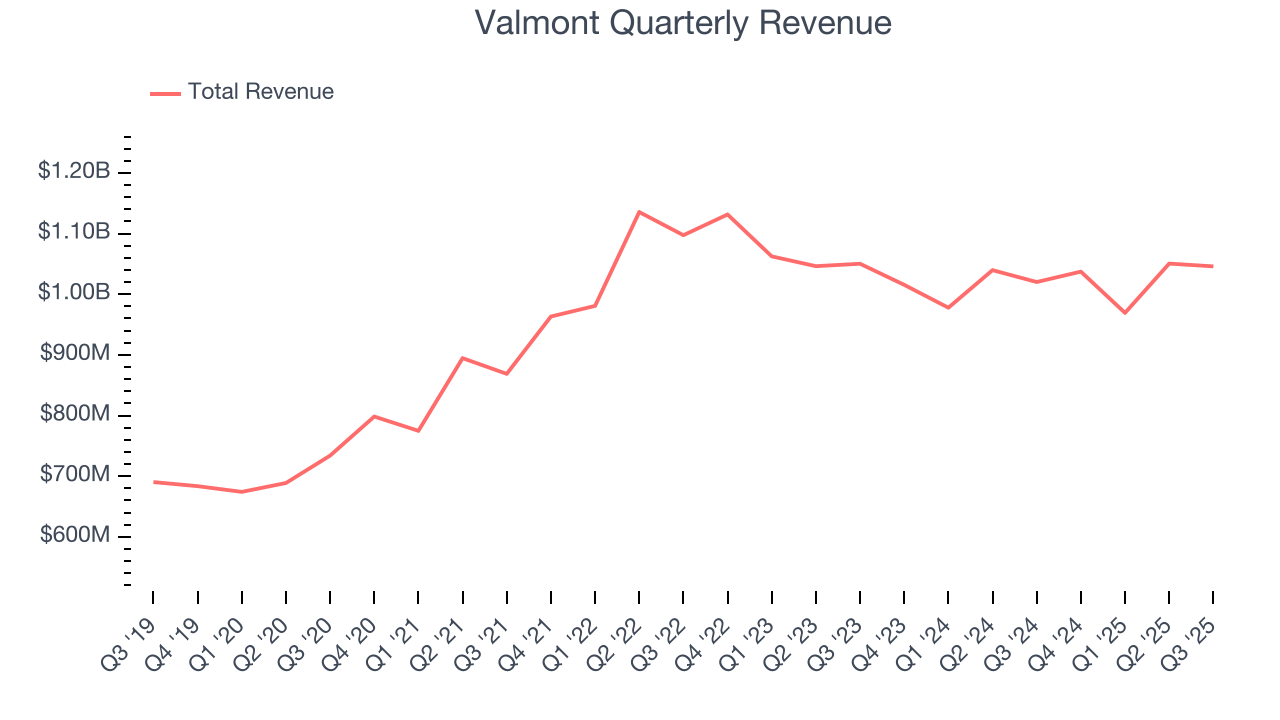
We at StockStory place the most emphasis on long-term growth, but within industrials, a half-decade historical view may miss cycles, industry trends, or a company capitalizing on catalysts such as a new contract win or a successful product line. Valmont’s recent performance marks a sharp pivot from its five-year trend as its revenue has shown annualized declines of 2.2% over the last two years. 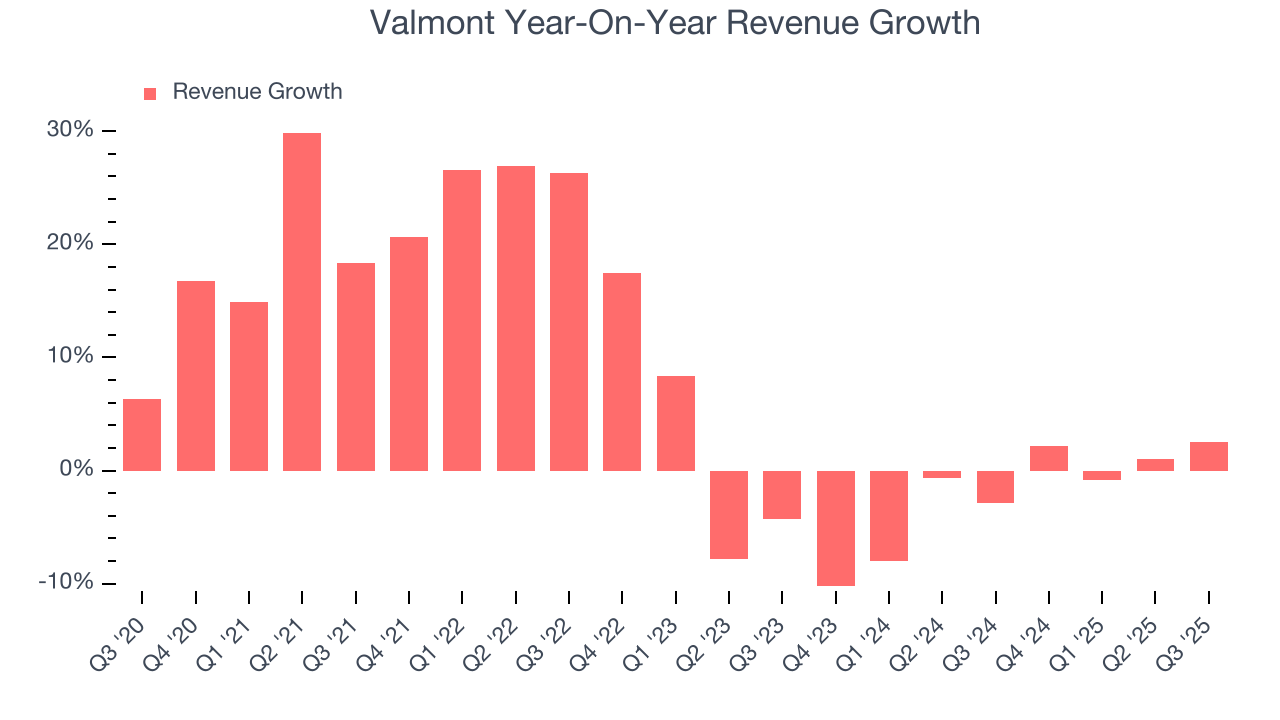
This quarter, Valmont reported modest year-on-year revenue growth of 2.5% but beat Wall Street’s estimates by 1.5%.
Looking ahead, sell-side analysts expect revenue to grow 3.1% over the next 12 months. While this projection indicates its newer products and services will fuel better top-line performance, it is still below average for the sector.
6. Gross Margin & Pricing Power
Valmont’s gross margin is slightly below the average industrials company, giving it less room to invest in areas such as research and development. As you can see below, it averaged a 28.3% gross margin over the last five years. That means Valmont paid its suppliers a lot of money ($71.69 for every $100 in revenue) to run its business. 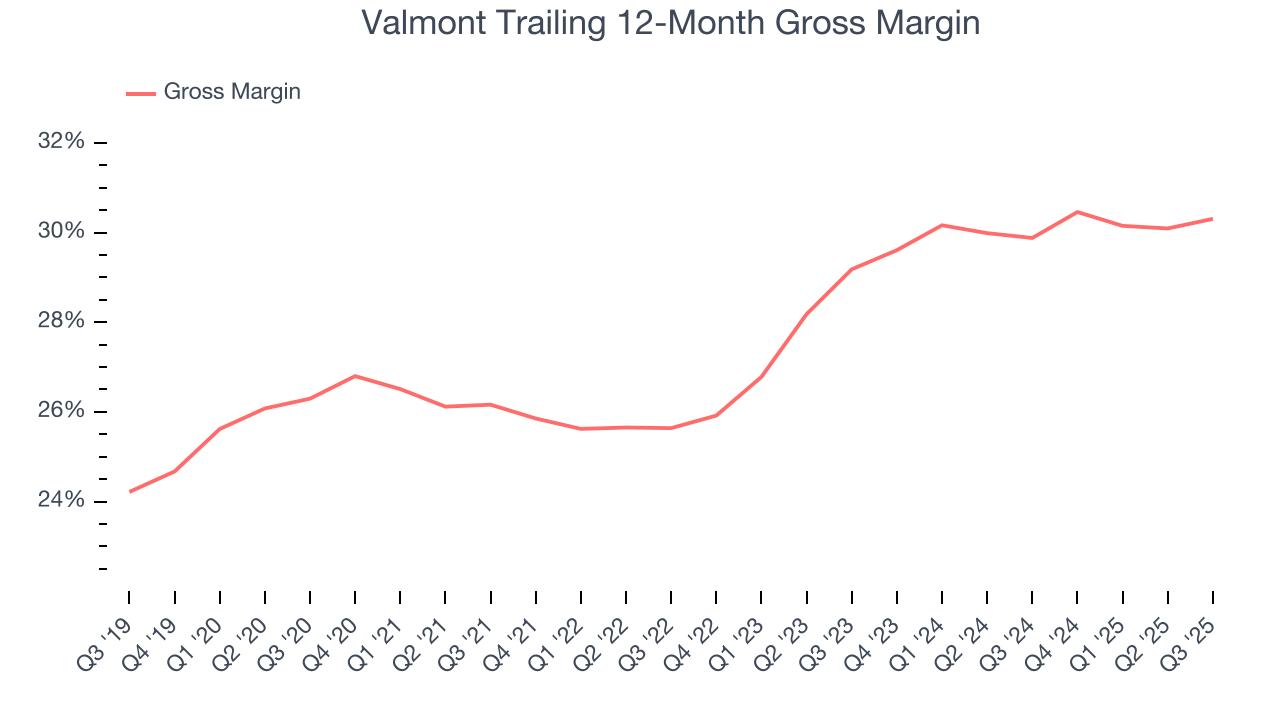
This quarter, Valmont’s gross profit margin was 30.4%, in line with the same quarter last year. On a wider time horizon, the company’s full-year margin has remained steady over the past four quarters, suggesting its input costs (such as raw materials and manufacturing expenses) have been stable and it isn’t under pressure to lower prices.
7. Operating Margin
Valmont has done a decent job managing its cost base over the last five years. The company has produced an average operating margin of 9.5%, higher than the broader industrials sector.
Looking at the trend in its profitability, Valmont’s operating margin rose by 1.5 percentage points over the last five years, as its sales growth gave it operating leverage.
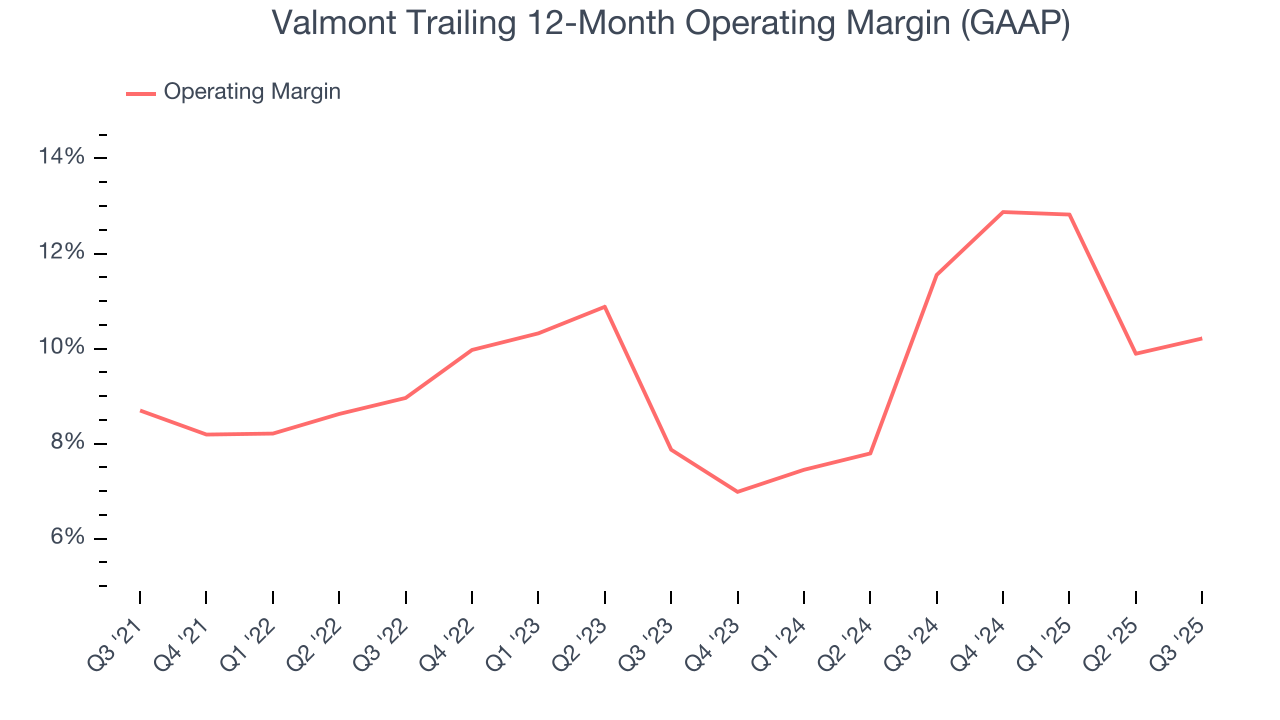
This quarter, Valmont generated an operating margin profit margin of 13.5%, up 1.2 percentage points year on year. The increase was encouraging, and because its operating margin rose more than its gross margin, we can infer it was more efficient with expenses such as marketing, R&D, and administrative overhead.
8. Earnings Per Share
Revenue trends explain a company’s historical growth, but the long-term change in earnings per share (EPS) points to the profitability of that growth – for example, a company could inflate its sales through excessive spending on advertising and promotions.
Valmont’s EPS grew at an astounding 18.7% compounded annual growth rate over the last five years, higher than its 8.1% annualized revenue growth. This tells us the company became more profitable on a per-share basis as it expanded.

Diving into the nuances of Valmont’s earnings can give us a better understanding of its performance. As we mentioned earlier, Valmont’s operating margin expanded by 1.5 percentage points over the last five years. On top of that, its share count shrank by 7.2%. These are positive signs for shareholders because improving profitability and share buybacks turbocharge EPS growth relative to revenue growth. 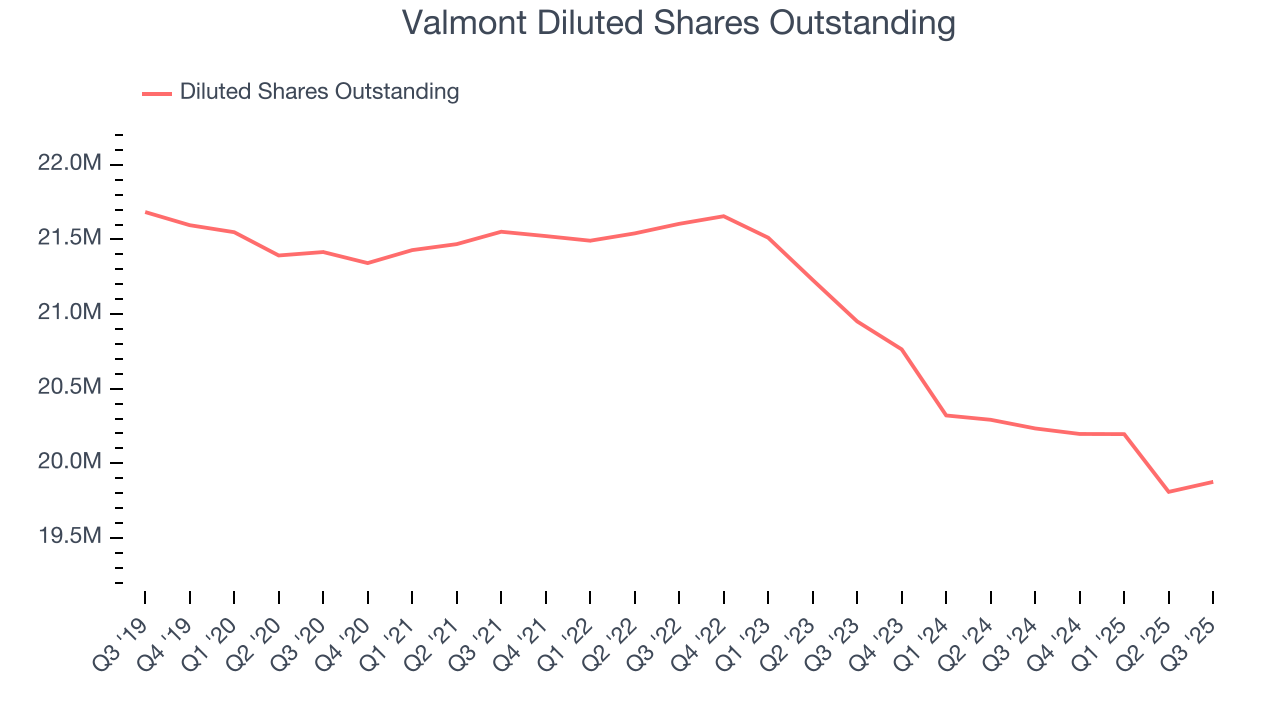
Like with revenue, we analyze EPS over a shorter period to see if we are missing a change in the business.
For Valmont, its two-year annual EPS growth of 7.2% was lower than its five-year trend. We hope its growth can accelerate in the future.
In Q3, Valmont reported adjusted EPS of $4.98, up from $4.11 in the same quarter last year. This print beat analysts’ estimates by 7.8%. We also like to analyze expected EPS growth based on Wall Street analysts’ consensus projections, but there is insufficient data.
9. Cash Is King
Although earnings are undoubtedly valuable for assessing company performance, we believe cash is king because you can’t use accounting profits to pay the bills.
Valmont has shown mediocre cash profitability over the last five years, giving the company limited opportunities to return capital to shareholders. Its free cash flow margin averaged 5.7%, subpar for an industrials business.
Taking a step back, an encouraging sign is that Valmont’s margin expanded by 10.3 percentage points during that time. The company’s improvement shows it’s heading in the right direction, and we can see it became a less capital-intensive business because its free cash flow profitability rose more than its operating profitability.

Valmont’s free cash flow clocked in at $70.58 million in Q3, equivalent to a 6.7% margin. The company’s cash profitability regressed as it was 13.3 percentage points lower than in the same quarter last year, but it’s still above its five-year average. We wouldn’t read too much into this quarter’s decline because investment needs can be seasonal, leading to short-term swings. Long-term trends are more important.
10. Return on Invested Capital (ROIC)
EPS and free cash flow tell us whether a company was profitable while growing its revenue. But was it capital-efficient? Enter ROIC, a metric showing how much operating profit a company generates relative to the money it has raised (debt and equity).
Although Valmont hasn’t been the highest-quality company lately, it historically found a few growth initiatives that worked. Its five-year average ROIC was 12.4%, higher than most industrials businesses.
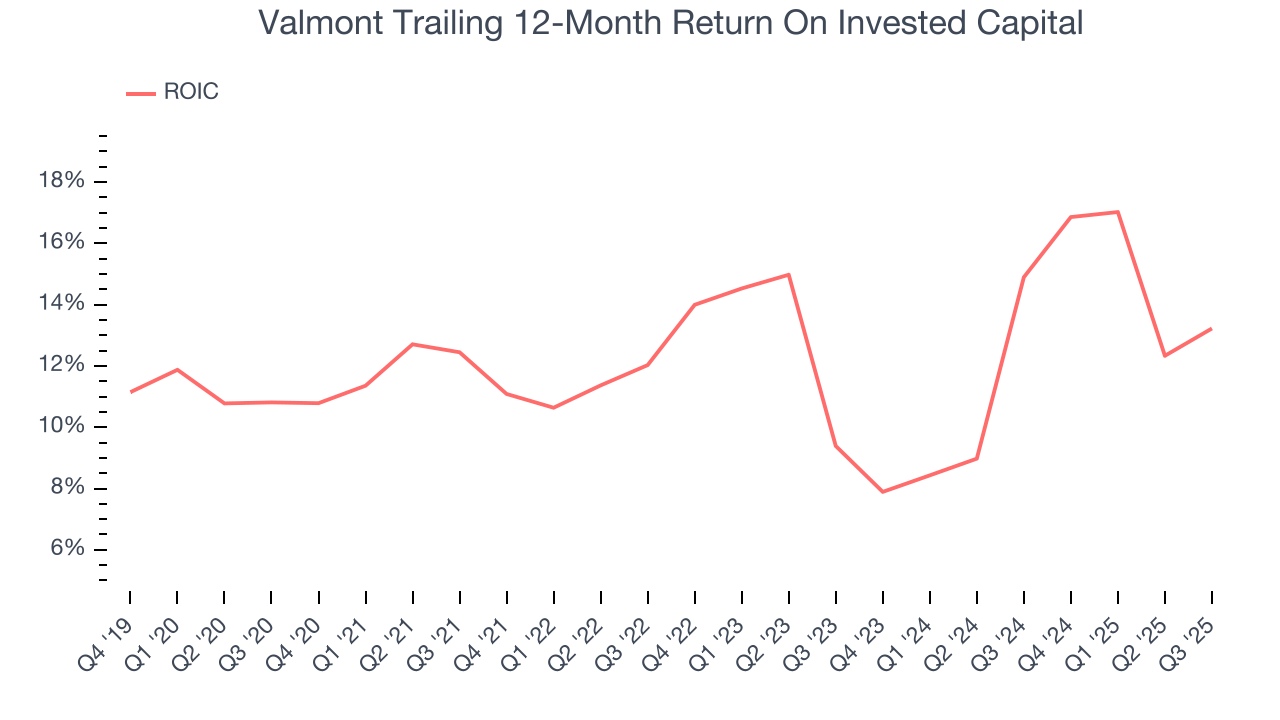
We like to invest in businesses with high returns, but the trend in a company’s ROIC is what often surprises the market and moves the stock price. On average, Valmont’s ROIC increased by 1.8 percentage points annually over the last few years. This is a good sign, and if its returns keep rising, there’s a chance it could evolve into an investable business.
11. Balance Sheet Assessment
Valmont reported $226.1 million of cash and $858.3 million of debt on its balance sheet in the most recent quarter. As investors in high-quality companies, we primarily focus on two things: 1) that a company’s debt level isn’t too high and 2) that its interest payments are not excessively burdening the business.
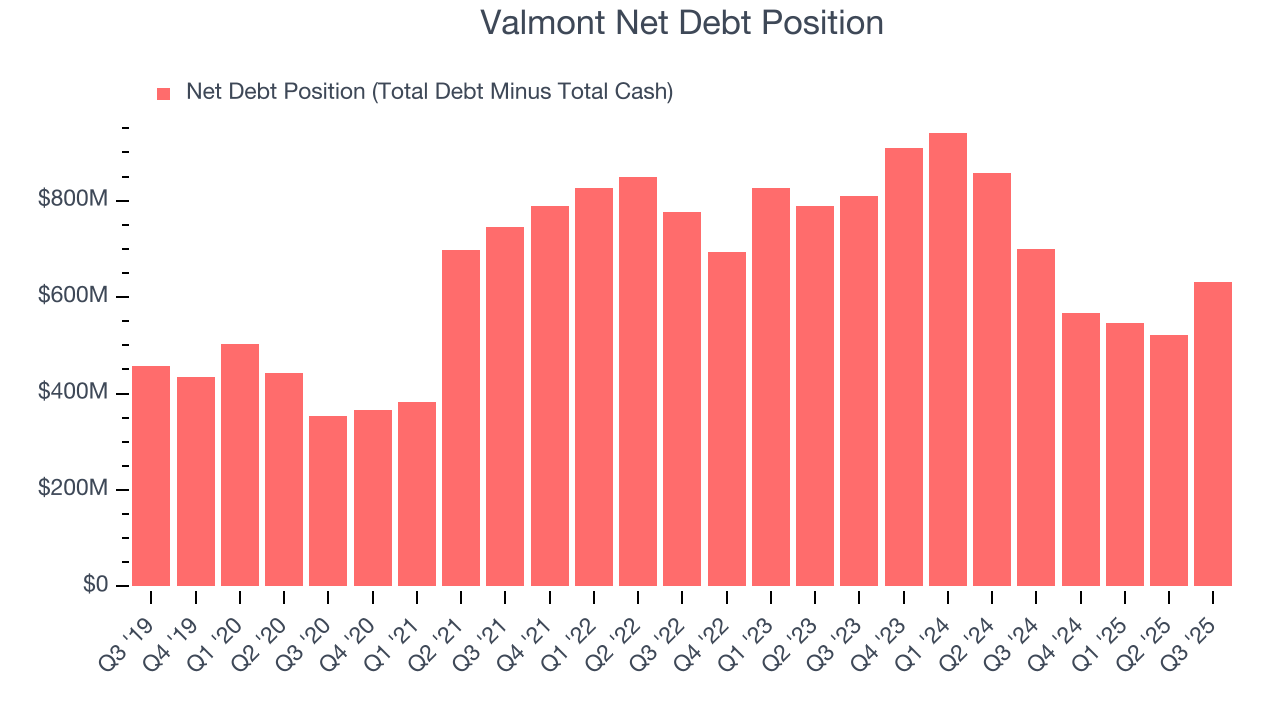
With $621.4 million of EBITDA over the last 12 months, we view Valmont’s 1.0× net-debt-to-EBITDA ratio as safe. We also see its $18.06 million of annual interest expenses as appropriate. The company’s profits give it plenty of breathing room, allowing it to continue investing in growth initiatives.
12. Key Takeaways from Valmont’s Q3 Results
It was great to see Valmont’s full-year EPS guidance top analysts’ expectations. We were also happy its revenue narrowly outperformed Wall Street’s estimates. Overall, this print had some key positives. The stock traded up 1.4% to $414.14 immediately following the results.
13. Is Now The Time To Buy Valmont?
Updated: December 5, 2025 at 10:09 PM EST
Before deciding whether to buy Valmont or pass, we urge investors to consider business quality, valuation, and the latest quarterly results.
Valmont’s business quality ultimately falls short of our standards. Although its revenue growth was decent over the last five years, it’s expected to deteriorate over the next 12 months and its organic revenue declined. And while the company’s rising cash profitability gives it more optionality, the downside is its gross margins are lower than its industrials peers.
Valmont’s P/E ratio based on the next 12 months is 20x. This valuation is reasonable, but the company’s shakier fundamentals present too much downside risk. We're pretty confident there are more exciting stocks to buy at the moment.
Wall Street analysts have a consensus one-year price target of $455 on the company (compared to the current share price of $414.90).





